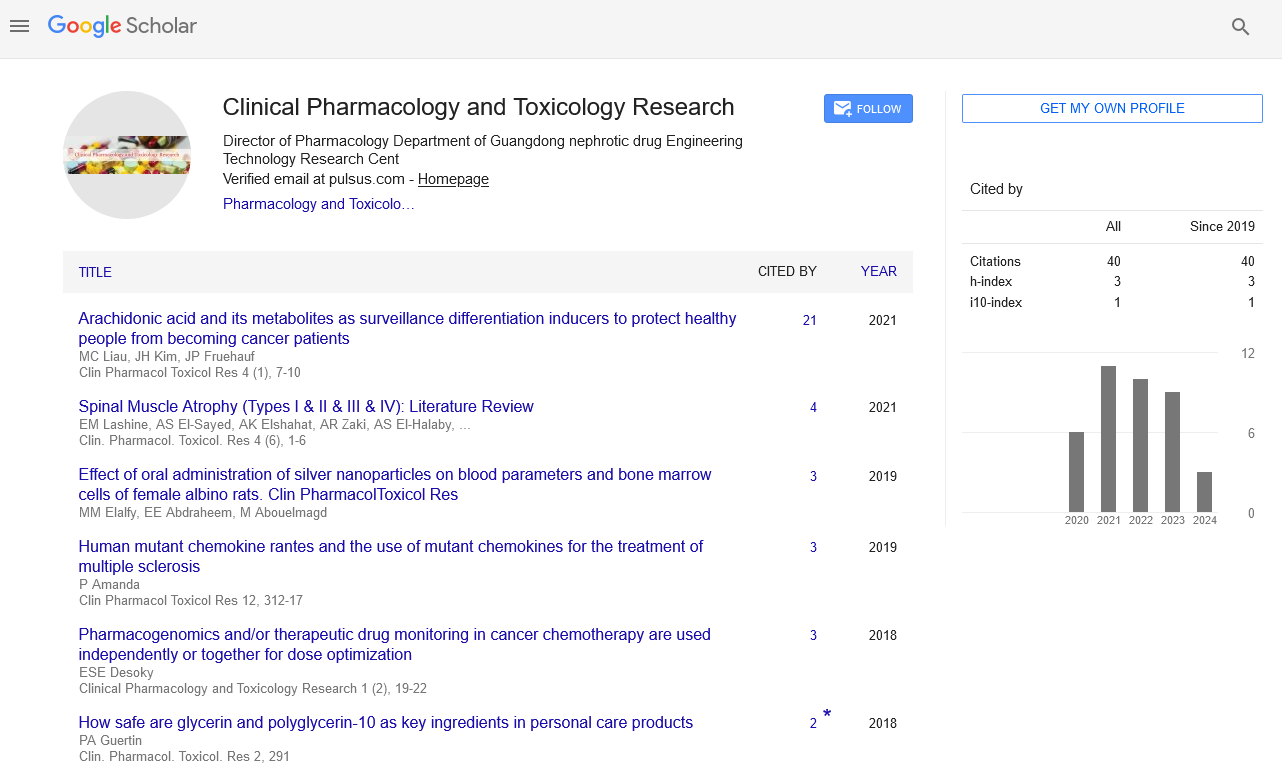Discovering novel drugs
Received: 01-Mar-2021 Accepted Date: Mar 16, 2021; Published: 23-Mar-2021
This open-access article is distributed under the terms of the Creative Commons Attribution Non-Commercial License (CC BY-NC) (http://creativecommons.org/licenses/by-nc/4.0/), which permits reuse, distribution and reproduction of the article, provided that the original work is properly cited and the reuse is restricted to noncommercial purposes. For commercial reuse, contact reprints@pulsus.com
Description
In the fields like medicine, biotechnology and pharmacology, drug discovery is a process through which new candidate medications have been discovered. Drugs were discovered by identifying the active ingredient from the traditional remedies or by inadvertent discovery. Chemical libraries of synthetic small molecules, natural products or extracts were screened in intact cells or whole organisms to spot substances that had a desirable therapeutic effect during a process known as classical pharmacology.
After the human genome sequence allowed rapid cloning and synthesis of huge quantities of purified proteins, it's become a standard practice to use high throughput screening of huge compounds libraries against isolated biological targets that are hypothesized to be disease-modifying during a process referred to as reverse pharmacology.
Drug Development
The complexity in drug development has increased manifolds over the past 40 years, requiring preclinical testing, Investigational New Drug (IND) applications, and completed clinical testing before marketing approval from the FDA. Generally, New Drug Applications (NDAs) or Biologics License Applications (BLA) are reviewed comprehensively before approval and then drug performance is resubmitted to regulatory agencies for post-marketing studies. The overarching goal is to bring more efficient and safer treatments to the patients as quickly as possible after a radical medical evaluation.
Stages of Drug Development
There are five critical steps in the U.S. drug development process, including many phases and stages within each of them. We will discuss these different phases and stages to develop an in-depth understanding of the whole process. The five steps are, Step 1: Discovery and Development, Step 2: Preclinical Research, Step 3: Clinical Development, Step 4: FDA Review and Step 5: FDA Post-market Safety Monitoring.
Pharmaceuticals are produced as a result of activities administered by a posh array of public and personal organizations that are engaged within the development and manufacture of medicine. As a part of this process, scientists at many publicly funded institutions perform basic research in subjects like chemistry, biochemistry, physiology, microbiology, and pharmacology.
Two classes of antihypertensive drugs function an example of how enhanced biochemical and physiological knowledge of a body system contributed to drug development. Hypertension (high blood pressure) may be a major risk factor for development of cardiovascular diseases.
Important thanks to prevent cardiovascular diseases are to regulate high vital sign. One of the physiological systems involved in vital sign control is that the renin-angiotensin system.
Drug Screening
Screening chemical compounds for potential pharmacological effects may be a vital process for drug discovery and development. Virtually every chemical and drug company within the world features a library of chemical compounds that are synthesized over many decades. Historically, many diverse chemicals are derived from natural products like plants, animals, and microorganisms. Many more chemical compounds are available from university chemists.
Chemicals that interact with drug targets in desirable ways become referred to as leads and are subjected to further developmental tests. Also, additional chemicals with slightly altered structures could also be synthesized if the lead compound doesn't appear to be ideal. Once a lead chemical is identified, it'll undergo several years of animal studies in pharmacology and toxicology to predict future human safety and efficacy.





